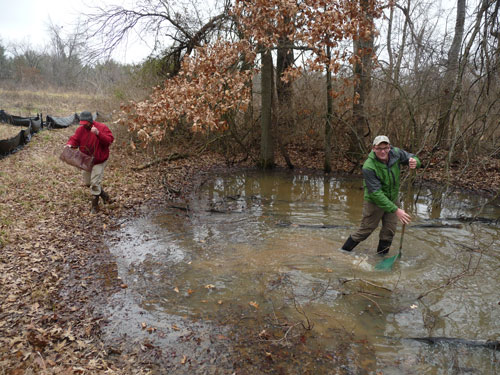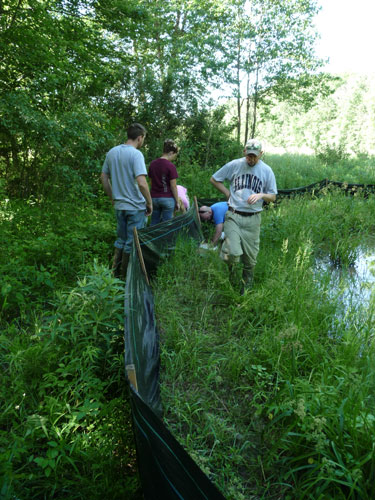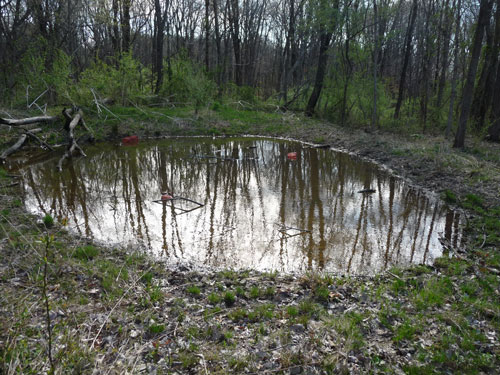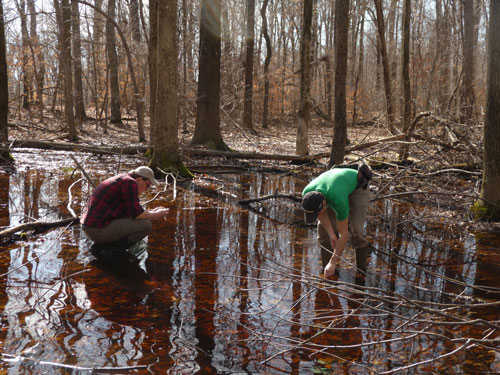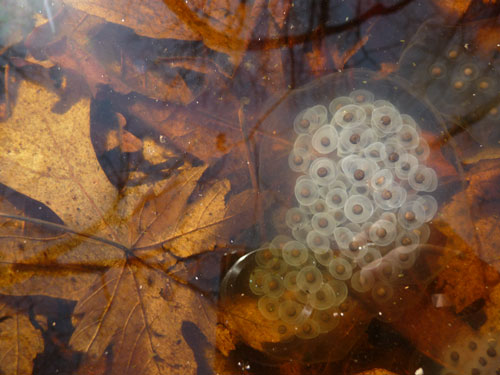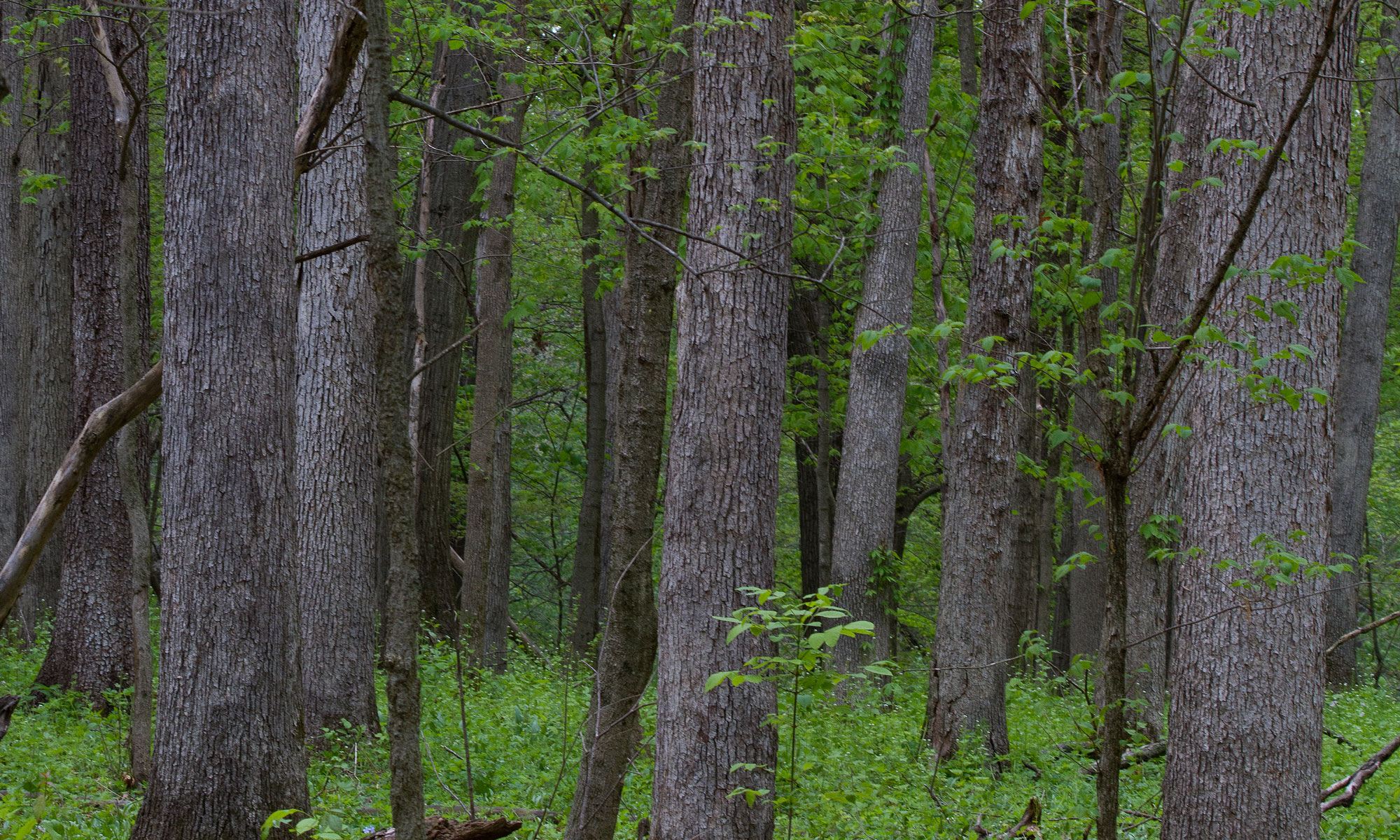Within Illinois, wetland conversion and drainage has been especially extensive where an estimated 90% of original wetland area has been lost. As such, wetland creation was listed as a priority campaign in the Illinois Wildlife Action Plan in 2005 with a primary goal of increasing suitable breeding sites for amphibians across the state. To date, more than 300 seasonal wetlands have been created on state-managed properties in east-central Illinois. In order to assess the effectiveness of these created wetlands INHS Biological Surveys and Assessment Program ecologist Andrew Kuhns has teamed with Lindenwood University Faculty members John Crawford and Paige Mettler-Cherry and IDNR District Heritage Biologists Terry Esker and Roger Jansen. They are examining plant and amphibian diversity and standard water chemistry variables of 78 wetlands across four categories: 1) 16 reference (natural) wetlands; 2) 20 created wetlands, 2-3 years of age; 3) 20 created wetlands, 4-5 years of age; and 4) 22 created wetlands, 6-7 years of age. All wetlands were repeatedly sampled from February to July of 2011 through 2012 to account for imperfect detection. Species richness and wetland conservation coefficients are being calculated to determine how well each created wetland is performing. All components will be incorporated into an index of biological integrity (IBI) to provide an initial assessment of created and reference wetlands in east-central Illinois. We are assigning conservation coefficients to amphibian and plant species based upon species sensitivity to disturbance, species rarity in Illinois, and species range size in Illinois. Wetlands are then scored as the sum of conservation coefficient values of amphibians using the ponds.
